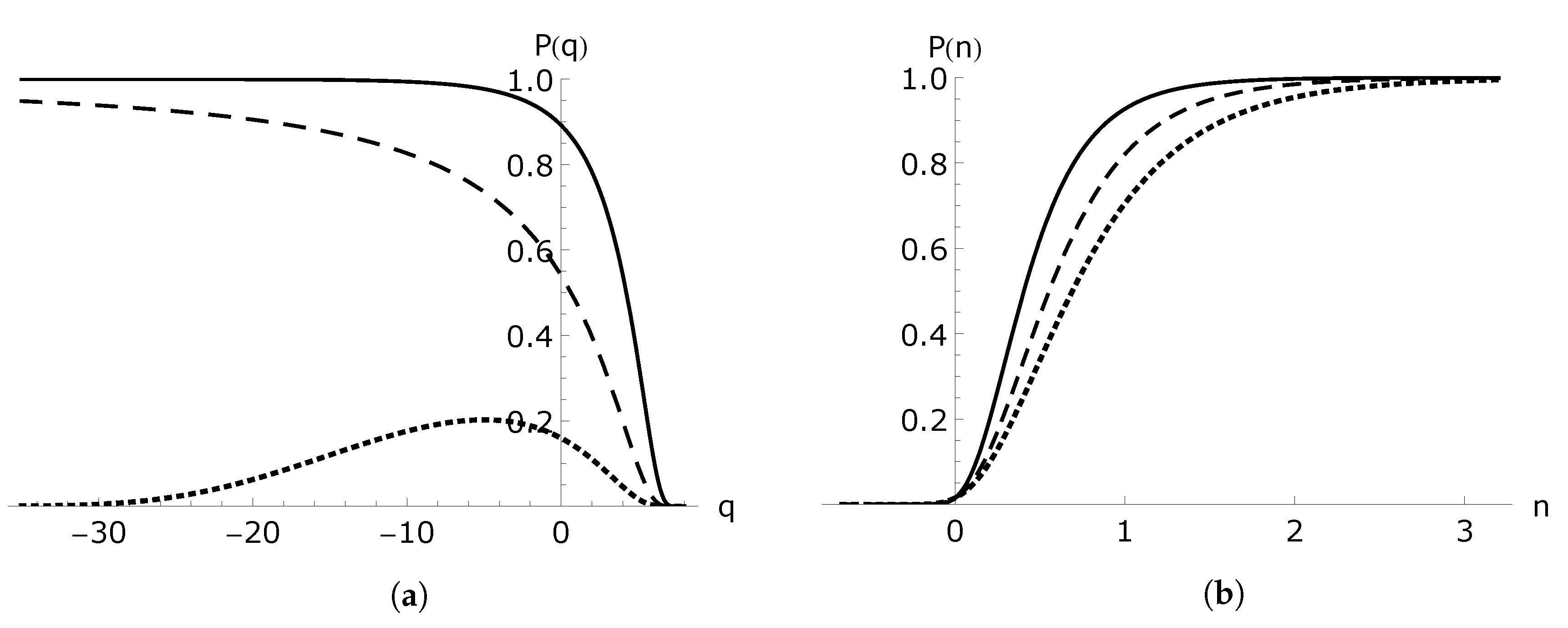Quantum Cosmology and Varying Physical Constants
Abstract
:1. Introduction
2. Tunneling Quantum Cosmology
2.1. The Tunneling Universe
2.2. The Wave Function of the Universe
3. Classical Varying Constants Cosmology
4. Quantum Cosmology of Varying Constants
5. Conclusions
Acknowledgments
Conflicts of Interest
References
- Weyl, H. Eine neue Erweiterung der Relativitàtstheorie. Ann. Phys. 1919, 364, 101–133. [Google Scholar] [CrossRef]
- Weyl, H. Universum und Atom. Natturwissenschaften 1934, 22, 145–149. [Google Scholar] [CrossRef]
- Dirac, P.A.M. The Cosmological constants. Nature 1937, 139, 323. [Google Scholar] [CrossRef]
- Dirac, P.A.M. A new basis for cosmology. Proc. R. Soc. A 1938, 165, 199–208. [Google Scholar] [CrossRef]
- Uzan, J.-P. The Fundamental constants and their variation: Observational status and theoretical motivations. Rev. Mod. Phys. 2003, 75, 403. [Google Scholar] [CrossRef]
- Uzan, J.-P. Varying Constants, Gravitation and Cosmology. Living Rev. Rel. 2011, 14, 2. [Google Scholar] [CrossRef] [PubMed]
- Barrow, J.D. The Constants of Nature: From Alpha to Omega–The Numbers that Encode the Deepest Secrets of the Universe; Vintage Books: London, UK, 2002. [Google Scholar]
- Dąbrowski, M.P.; Marosek, K. Regularizing cosmological singularities by varying physical constants. J. Cosmol. Astropart. Phys. 2013, 2013, 012. [Google Scholar] [CrossRef]
- Harko, T; Lu, H.Q.; Mak, M.K.; Cheng, K.S. Quantum birth of the universe in the varying speed of light cosmologies. Europhys. Lett. 2000, 49, 814. [Google Scholar] [CrossRef]
- Szydłowski, M.; Krawiec, A. Dynamical system approach to cosmological models with a varying speed of light. Phys. Rev. D 2003, 68, 063511. [Google Scholar] [CrossRef]
- Webb, J.K.; King, J.A.; Murphy, M.T.; Flambaum, F.F.; Carswell, R.F.; Bainbridge, M.B. Indications of a spatial variation of the fine structure constant. Phys. Rev. Lett. 2011, 107, 191101. [Google Scholar] [CrossRef] [PubMed]
- Murphy, M.T.; Locke, C.R.; Light, P.S.; Luiten, A.N.; Lawrence, J.S. Laser frequency comb techniques for precise astronomical spectroscopy. Mon. Not. R. Astron. Soc. 2012, 422, 761–771. [Google Scholar] [CrossRef]
- Vilenkin, A. Creation of Universes from nothing. Phys. Lett. B 1982, 117, 25–28. [Google Scholar] [CrossRef]
- Vilenkin, A. Birth of inflationary universes. Phys. Rev. D 1983, 27, 2848. [Google Scholar] [CrossRef]
- DeWitt, B.S. Quantum Theory of Gravity. I. The Canonical Theory. Phys. Rev. 1967, 160, 1113. [Google Scholar] [CrossRef]
- Wheeler, J.A. Superspace and the nature of quantum geometrodynamics. In Quantum Cosmology; World Scientific: Singapore, 1987. [Google Scholar]
- Vilenkin, A. Quantum Cosmology and the Initial State of the Universe. Phys. Rev. D 1988, 37, 888. [Google Scholar] [CrossRef]
- Vilenkin, A. Boundary Conditions in Quantum Cosmology. Phys. Rev. D 1986, 33, 3560. [Google Scholar] [CrossRef]
- Hartle, J.B.; Hawking, S.W. Wave function of the Universe. Phys. Rev. D 1983, 28, 2690. [Google Scholar] [CrossRef]
- Kiefer, C. Quantum Gravity—A Short Overview. In Quantum Gravity; Birkhäuser Basel: Basel, Switzerland, 2007. [Google Scholar]
- Barrow, J.D. Cosmologies with varying light speed. Phys. Rev. D 1999, 59, 043515. [Google Scholar] [CrossRef]
- Albrecht, A.; Magueijo, J. A Time varying speed of light as a solution to cosmological puzzles. Phys. Rev. D 1999, 59, 043516. [Google Scholar] [CrossRef]
- Barrow, J.D.; Magueijo, J. Solving the flatness and quasiflatness problems in Brans-Dicke cosmologies with a varying light speed. Class. Quantum Gravity 1999, 16, 1435. [Google Scholar] [CrossRef]
- Gopakumar, P.; Vijayagovindan, G.V. Solutions to cosmological problems with energy conservation and varying c, G and Λ. Mod. Phys. Lett. A 2001, 16, 957–961. [Google Scholar] [CrossRef]
- Feinberg, J.; Peleg, Y. Self-Adjoint Wheeler-DeWitt Operators, the Problem of Time and the wave Function of the Universe. Phys. Rev. D 1995, 52, 1988–2000. [Google Scholar] [CrossRef]
- Carreau, M.; Farhi, E. The Functional Integral for Quantum Systems with Hamiltonians Unbounded from Below. Ann. Phys. 1990, 204, 186–207. [Google Scholar] [CrossRef]
- Atkatz, D. Quantum cosmology for pedestrians. Am. J. Phys. 1994, 62, 619–627. [Google Scholar] [CrossRef]
- Leszczyńska, K.; Balcerzak, A.; Dąbrowski, M.P. Varying constants quantum cosmology. J. Cosmol. Astropart. Phys. 2015, 2, 012. [Google Scholar] [CrossRef]
© 2017 by the author. Licensee MDPI, Basel, Switzerland. This article is an open access article distributed under the terms and conditions of the Creative Commons Attribution (CC BY) license (http://creativecommons.org/licenses/by/4.0/).
Share and Cite
Leszczyńska, K. Quantum Cosmology and Varying Physical Constants. Universe 2017, 3, 46. https://doi.org/10.3390/universe3020046
Leszczyńska K. Quantum Cosmology and Varying Physical Constants. Universe. 2017; 3(2):46. https://doi.org/10.3390/universe3020046
Chicago/Turabian StyleLeszczyńska, Katarzyna. 2017. "Quantum Cosmology and Varying Physical Constants" Universe 3, no. 2: 46. https://doi.org/10.3390/universe3020046





